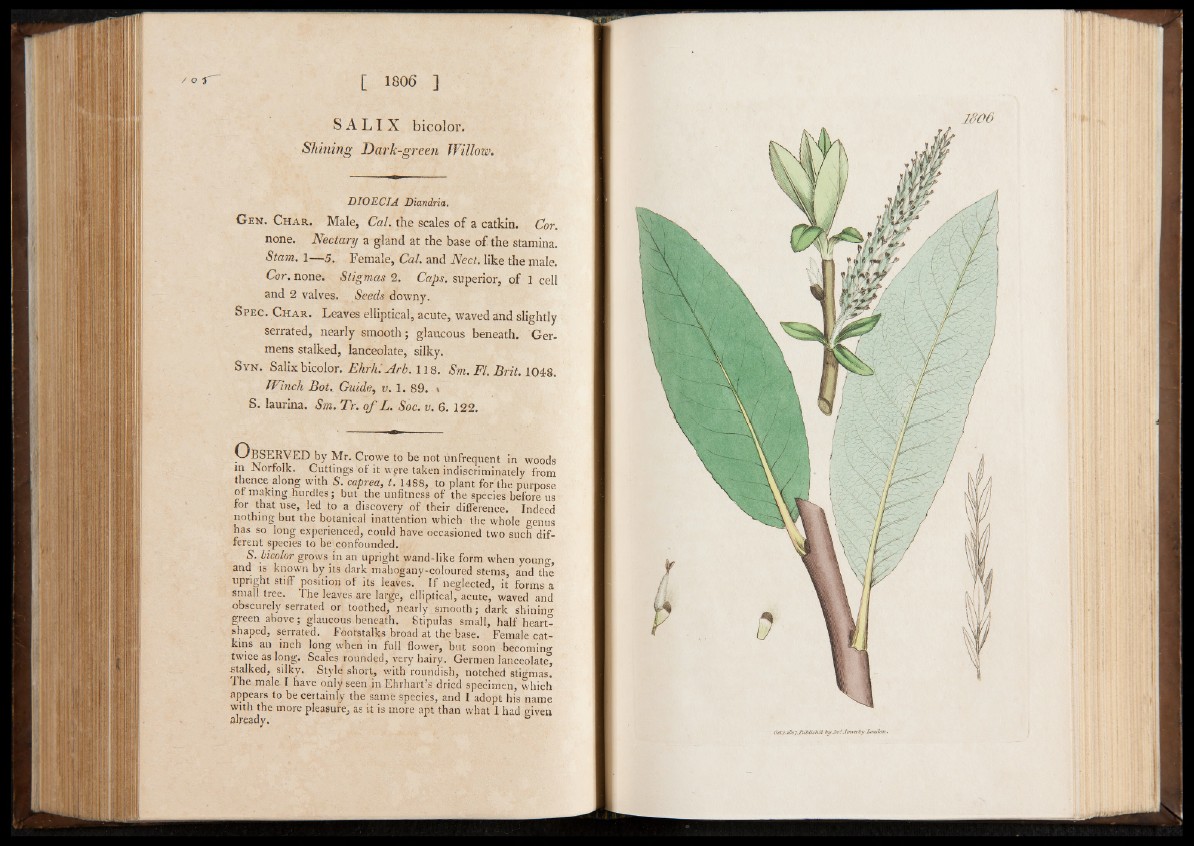
S A L I X b ico lo r.
Shining Dark-green Willow.
DIOECIA Diandria.
Gen. Char. Male, Cal. the scales of a catkin. Cor.
none. Nectary a gland at the base of. the stamina.
Stam. 1— 5. Female, Cal. and Ned. like the male.
Cor. none. Stigmas 2. Caps, superior, of 1 cell
and 2 valves. Seeds downy.
Spec. Char. Leaves elliptical, acute, waved and slightly
serrated, nearly smooth; glaucous beneath. Ger-
mens stalked, lanceolate, silky.
Syn. Salix bicolor. Ehrh.Arb. 118. Sm. FI. Brit. 1048.
Winch Bot. Guide, v. 1. 89. \
S. laurina. Sm. Tr. o f L . Soc. v. 6. 122.
O b s e r v e d by Mr. Crowe to be not unfrequent in woods
in Norfolk. Cuttings of it wpre taken indiscriminately from
thence along with S. caprea, t. 1488, to plant for the purpose
or making hurdles; but the unfitness of the species before! us
for that use, led to a discovery of their difference. Indeed
nothing but the botanical inattention which the whole genus
has so long experienced, could have occasioned two such different
species to be confounded.
S.licolor grows in an upright wand-like form when young,
and is known by its dark mahogany-coloured stems, and the
upright stiff position of its leaves. If neglected, it forms a
small tree. The leaves are large, elliptical, acute, waved and
obscurely serrated or toothed, nearly „smooth; dark shinino-
green above; glaucous beneath. Stipulas small, half heart-
shaped, serrated. Footstalks broad at the base. Female catkins
an inch long when in full flower, but soon becoming
twice as long. Scales rounded, very hairy. Germen lanceolate,
stalked, silky. Style short, with roundish, notched stigmas.
The male I have only seen inEhrhart’s dried specimen, which
appears to be certainly the same species, and I adopt his name
with the more pleasure, as it is more apt than what I had given
already. °